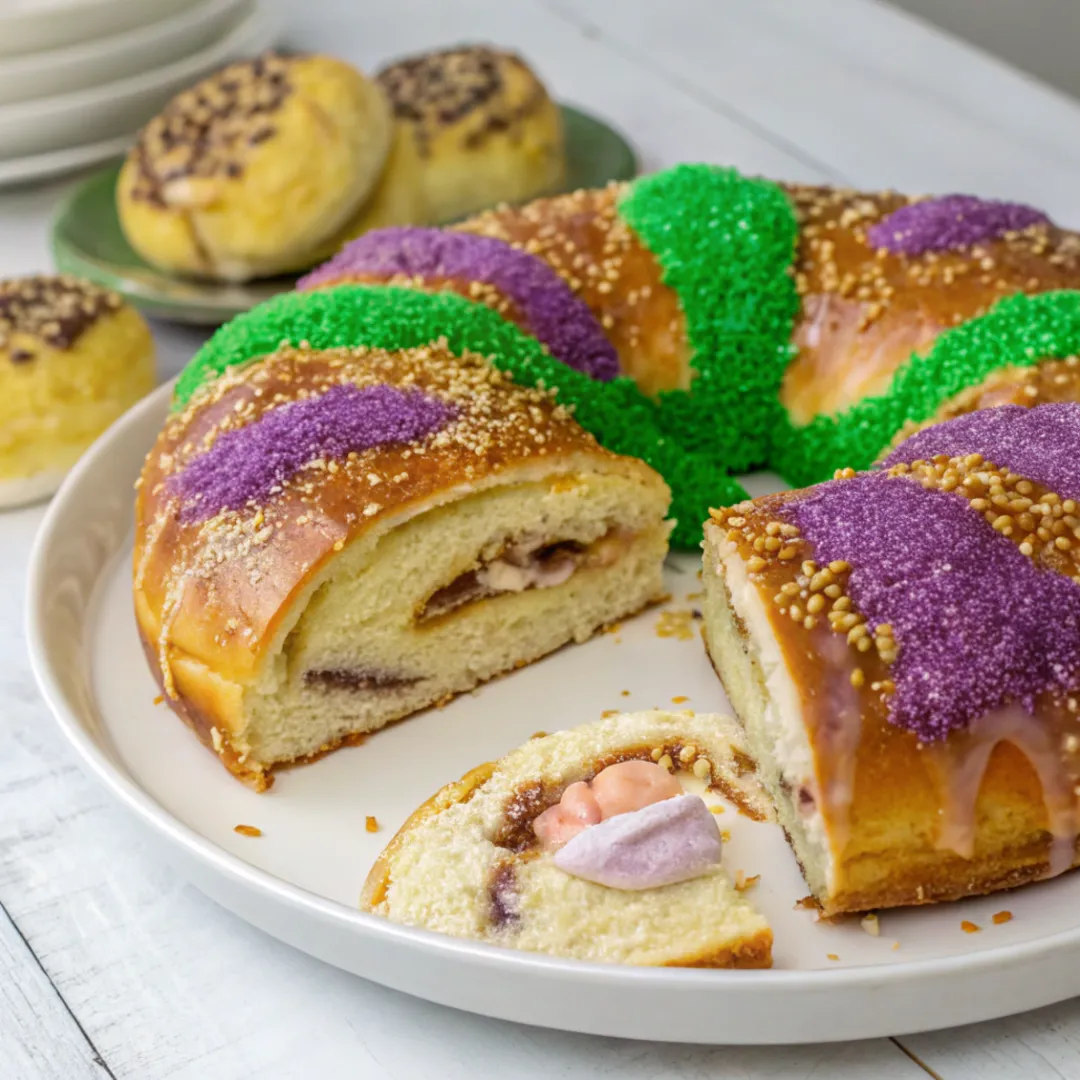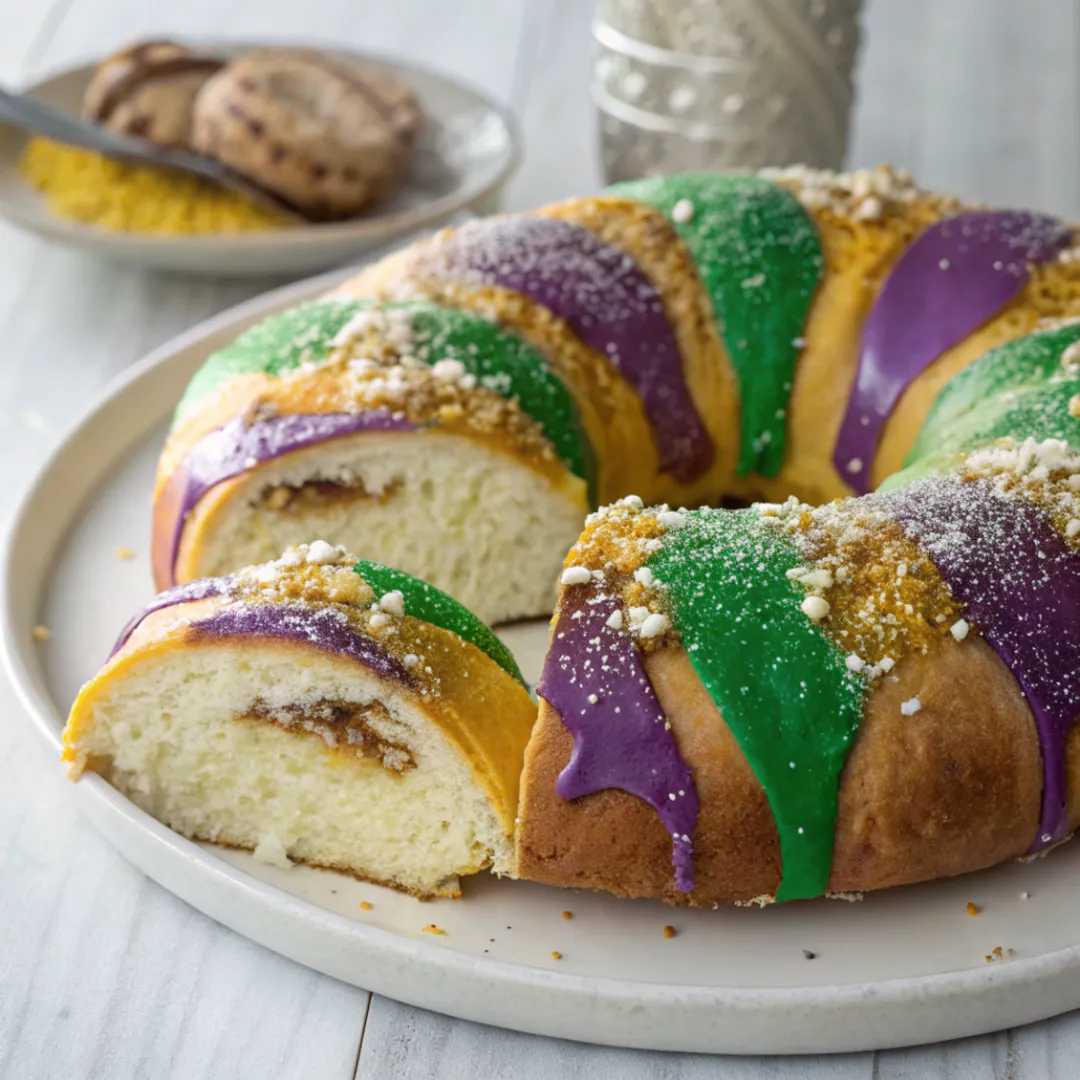King Cake Craze: Discover the Sweet History, Best Bakeries & Irresistible Recipes
What is King Cake?
The king cake isn’t just a dessert—it’s a celebration. A symbol of festivity, heritage, and community, this colorful ring of dough has become an essential part of Mardi Gras tradition, especially in Louisiana. But what exactly is a king cake, and why has it gained such widespread popularity across the U.S. and beyond?
A king cake is a sweet, circular pastry that blends the richness of brioche dough with vibrant icing and colorful sprinkles, usually in purple, green, and gold—Mardi Gras colors representing justice, faith, and power. While it may look like a festive donut at first glance, this delicacy is steeped in centuries of cultural and religious tradition.
Let’s dive deeper into the rich background of the king cake and explore how it evolved from European roots to a beloved American celebration centerpiece.
Origins of the King Cake Tradition
The roots of the king cake trace back to Europe, particularly France and Spain, where a similar pastry—known as “Galette des Rois” in France or “Rosca de Reyes” in Spain—is enjoyed on Epiphany (January 6), marking the arrival of the three kings to visit baby Jesus. These early versions were more about faith than fun, but the concept was unmistakably the precursor to what we now call the king cake.
When French settlers brought the tradition to New Orleans in the 18th century, it took on a life of its own. Blending French Catholic customs with the local Creole culture and the raucous spirit of Mardi Gras, the modern king cake was born. And unlike its European cousins, it was colorful, filled with cinnamon or cream cheese, and often shaped like a crown.
The Symbolism Behind the Baby in the King Cake
One of the quirkiest features of the king cake is the tiny plastic baby hidden inside. While it might seem odd to tuck a toy into a pastry, it has deep symbolic roots. Originally, the baby represented the baby Jesus, and finding it was considered a blessing, bringing good fortune to the finder.
Over time, this symbolism took on new meaning. In many Mardi Gras celebrations, the person who finds the baby in their slice becomes the “king” or “queen” of the party—and is also responsible for bringing the next king cake or hosting the next celebration. It’s a clever way to keep the festivities going and ensure that no one ever runs out of cake!
But don’t worry—the baby isn’t always baked into the cake anymore. For safety reasons, many bakeries now place it on the side, leaving it up to you to hide before serving.
Why King Cake is Associated with Mardi Gras
Though king cake’s roots lie in the Christian feast of Epiphany, it has become almost inseparable from Mardi Gras culture. The Mardi Gras season begins on Twelfth Night (January 6) and runs through Fat Tuesday, the day before Ash Wednesday. And guess what? That entire time is prime king cake season.
The colors of the king cake—purple for justice, green for faith, and gold for power—are the official colors of Mardi Gras. They were selected in 1872 by the Rex Organization, one of the oldest Mardi Gras krewes in New Orleans. Today, every slice of king cake you see during carnival season reflects those colors proudly.
If you’re ever in Louisiana between January and March, you’ll see king cakes in every bakery, supermarket, and gas station. They’re not just a dessert—they’re a daily ritual, a cultural icon, and a delicious reason to celebrate.
A Taste of Tradition: Classic King Cake Explained
Now that we’ve covered the history, let’s take a bite into what actually makes a traditional king cake so irresistible. The base of the cake is usually a sweet, yeast-based dough similar to brioche, soft and slightly chewy with a buttery richness. It’s typically rolled out, slathered with cinnamon sugar, then twisted into a ring before baking.
Once baked, it’s topped with a sugary glaze and a generous amount of purple, green, and gold sanding sugar. Some versions are simple and pure, while others are filled with sweet fillings like cream cheese, praline, or fruit preserves.

Key Ingredients in a Traditional King Cake
A classic king cake recipe includes a handful of staple ingredients:
Flour – All-purpose or bread flour to provide structure.
Yeast – For that light, airy, doughy rise.
Eggs & Butter – To add richness and tenderness.
Milk & Sugar – For flavor and moisture.
Cinnamon Sugar Filling – The heart of any good king cake.
Each bite is a nostalgic mix of warmth and sweetness that perfectly complements a cup of coffee or hot chocolate. The combination of soft, fluffy bread and sugary glaze makes it unlike any other pastry.
Common Toppings and Fillings
The fun doesn’t stop at cinnamon! Modern bakers and home chefs have turned king cake into a creative playground. Today’s cakes come stuffed with everything from cream cheese to strawberry jam to Bavarian custard. Some even get boozy with rum or amaretto fillings.
On top, you’ll often find:
Icing – Usually a simple powdered sugar glaze.
Colored Sugar Crystals – Always purple, green, and gold.
Chopped Nuts or Crumbs – For added texture and flavor.
Festive Sprinkles – Because more is more during Mardi Gras.
With so many options, there’s truly a king cake for every palate.
The Traditional Cinnamon Twist
Despite all the modern innovation, the traditional cinnamon-filled king cake remains a fan favorite. Why? Because it’s timeless. The swirl of cinnamon inside the soft dough creates a flavor experience that’s both cozy and decadent.
This version typically isn’t as heavy or sweet as the filled ones, making it ideal for breakfast or casual snacking. It’s the kind you’ll most often find in New Orleans bakeries during the early weeks of carnival season, offering that perfect balance of simplicity and celebration.
Creative Spins: Modern Takes on the Classic King Cake
The beauty of king cake lies in its adaptability. While purists love the classic cinnamon-sugar combo, bakers across the country have been reinventing this Mardi Gras staple with bold flavors, unexpected fillings, and new formats.
From savory renditions to allergy-friendly versions, let’s explore how king cake has evolved into a modern dessert powerhouse while still honoring its roots.
Filled King Cakes: From Cream Cheese to Bananas Foster
If you’ve ever bitten into a king cake and tasted a burst of rich creaminess or fruity goodness, you’ve experienced a filled version. These are wildly popular and offer a whole new layer of indulgence.
Popular fillings include:
Cream Cheese – Rich and tangy, a fan favorite.
Strawberry or Blueberry Jam – Adds fruity brightness.
Pecan Praline – Nutty, sweet, and Southern to the core.
Bananas Foster – A New Orleans classic with boozy flair.
Bakeries like Caluda’s and Randazzo’s are known for their decadent filled options, which often win awards during local king cake contests.
Vegan and Gluten-Free King Cake Options
As dietary needs evolve, so does the king cake. Today, you can find vegan king cakes made with plant-based butter and milk, and gluten-free king cakes crafted with alternative flours like almond, oat, or rice flour.
These cakes often use flaxseed or chia as egg substitutes, and natural food coloring to replicate the traditional Mardi Gras sparkle. Taste-wise, they hold up surprisingly well—chewy, flavorful, and perfect for inclusive celebration.
Bakeries like Breads on Oak in New Orleans are leading the way in offering eco-conscious and allergen-friendly king cake options.
Savory King Cakes – A Trend Worth Trying
Yes, you read that right—savory king cakes are real, and they’re amazing. Imagine a flaky pastry stuffed with boudin sausage, crawfish étouffée, or spinach and artichoke dip, shaped into a ring and topped with a light glaze of garlic butter.
These savory versions are making waves in the South, especially in local markets and food festivals. They’re perfect for brunch, game day, or as a conversation-starting appetizer at your Mardi Gras party.
While they break from tradition, they still celebrate the playful spirit of the king cake and bring a delicious new twist to the table.

